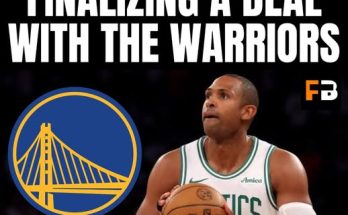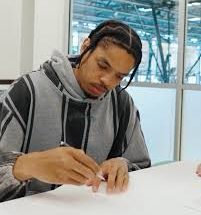The Los Angeles Lakers’ reported interest in Andrew Wiggins marks another significant move in their ongoing effort to maximize their roster’s potential around LeBron James and Anthony Davis while also looking toward a long-term future built around elite talent. Wiggins, who has carved out a reputation as a versatile two-way wing since entering the league as the first overall pick in the 2014 NBA Draft, offers a unique blend of athleticism, defensive ability, and scoring efficiency that could immediately impact the Lakers’ lineup. His ability to guard multiple positions—ranging from shooting guards to small forwards—aligns perfectly with the Lakers’ strategic emphasis on switching defenses and perimeter versatility, especially in a Western Conference that features numerous dynamic wing players. Beyond defense, Wiggins has shown the capacity to provide timely scoring both as a primary and secondary option, an attribute the Lakers could leverage in high-stakes playoff scenarios.
Financially, acquiring Wiggins would be a complex yet manageable endeavor. The 30-year-old is in the third year of a four-year, $109 million contract, which includes a player option of $30.2 million for the 2026-27 season. While this is a substantial salary commitment, the Lakers have the kind of flexibility and potential trade assets to make the deal feasible without compromising the team’s long-term financial stability. Names like Gabe Vincent, who brings perimeter defense and playmaking, or Maxi Kleber, a stretch big capable of spacing the floor, could serve as pieces in a potential trade package that satisfies both the Lakers’ needs and the Heat’s desire for financial relief or roster assets. The Lakers’ front office would need to carefully calibrate such a trade to maintain flexibility for future roster maneuvers while ensuring the team remains competitive in the present.
For the Miami Heat, the possibility of trading Wiggins represents both a financial and strategic pivot. The Heat are navigating a transitional period, especially after the high-profile departure of Jimmy Butler to the Golden State Warriors. While Wiggins is a proven talent, his contract represents a notable salary commitment that the Heat may consider moving in order to create additional flexibility or acquire younger players or draft picks that better fit their long-term rebuilding or retooling plans. In recent years, the Heat have demonstrated a strong ability to extract value from trades while maintaining competitive relevance, and a Wiggins deal could be another example of the front office balancing immediate competitiveness with future planning. The team’s evaluation would hinge not only on the financial implications but also on how Wiggins’ departure might affect team chemistry, on-court performance, and leadership in the locker room.
From a basketball standpoint, Wiggins’ arrival in Los Angeles could address several key Lakers needs. Depth at the wing position has been a persistent concern, especially in a playoff context where defensive versatility and the ability to guard multiple positions are paramount. Wiggins’ defensive instincts, combined with his athleticism and experience, would allow the Lakers to implement more aggressive switches on pick-and-rolls and increase pressure on opposing perimeter players. Offensively, Wiggins could serve as a reliable secondary scorer who can create his own shot or spot up from three-point range, providing a necessary complement to LeBron James’ playmaking and Anthony Davis’ interior scoring. This combination of defensive and offensive flexibility could make the Lakers a more balanced and dynamic team capable of competing against the elite rosters in the West.
Leadership and intangibles also play a crucial role in this potential scenario. Wiggins has been part of the Golden State Warriors’ championship-winning roster and brings a wealth of playoff experience that could prove invaluable in mentoring younger players and stabilizing the locker room environment. Pairing Wiggins with veterans like LeBron James and Anthony Davis creates a blend of leadership, experience, and talent that the Lakers’ front office likely views as essential in maintaining both competitive relevance and a winning culture. His presence could also alleviate some of the scoring and defensive burden from James, who at this stage in his career benefits from having versatile, capable teammates who can execute at both ends of the floor.
However, the Lakers would need to consider how Wiggins’ style and role would fit into the existing system. Head coach Darvin Ham’s philosophy emphasizes pace, ball movement, and defensive versatility. Integrating Wiggins effectively would require strategic adjustments in rotations, ensuring that spacing and positional matchups are optimized while also allowing Wiggins to thrive within his strengths. If managed well, this could turn Wiggins into a pivotal piece for a team chasing another championship, adding depth, experience, and two-way capability that few other available wings offer at this stage of the season.
The broader context of the trade talks also highlights the evolving dynamics of NBA roster construction. Teams like the Lakers are increasingly seeking versatile, two-way players capable of impacting both ends of the floor while maintaining salary flexibility. Meanwhile, teams in transition, such as the Heat, must balance competitive relevance with the need to manage payroll and accumulate future assets. This interplay underscores how trades today are rarely just about filling immediate needs—they are complex negotiations that involve long-term financial planning, strategic foresight, and an understanding of player fit and chemistry.
Ultimately, the potential acquisition of Andrew Wiggins by the Lakers is more than just a headline; it represents a calculated strategic maneuver aimed at enhancing championship contention while balancing financial and roster flexibility. It is a reminder of the delicate art of NBA roster management, where talent evaluation, contract considerations, and team chemistry must all align to create a successful outcome. For the Heat, the trade represents an opportunity to reshape their roster, gain financial flexibility, and potentially acquire assets that better align with their evolving strategy.
As discussions unfold, fans and analysts alike will be watching closely. The Lakers’ pursuit of Wiggins could set a precedent for how teams approach similar situations involving veteran wings with substantial contracts. Success would hinge not only on the individual performance of Wiggins but also on how seamlessly he integrates with existing stars and contributes to a cohesive, championship-caliber team. Conversely, the Heat’s ability to leverage Wiggins’ value for strategic gain could serve as another case study in the business and competitive complexities of NBA front office decision-making.
While much remains speculative at this stage, the interest in Wiggins highlights the Lakers’ continued focus on strategic roster enhancement. The potential impact on the Western Conference, where the Lakers are vying to return to dominance, could be significant. A successful integration of Wiggins would address key gaps, elevate the team’s defensive and offensive versatility, and provide critical support for LeBron James and Anthony Davis. In the meantime, Miami’s handling of Wiggins’ future will reflect the franchise’s broader philosophy of balancing competitiveness with forward-looking flexibility, a hallmark of their approach under Pat Riley and Erik Spoelstra.



